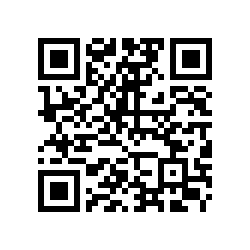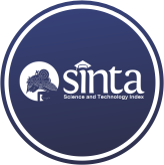Deteksi Indikasi Kelelahan Menggunakan Deep Learning
(1) Jurusan Informatika, Universitas Islam Indonesia
(2) Jurusan Informatika, Universitas Islam Indonesia
(3) Jurusan Informatika, Universitas Islam Indonesia
(4) Jurusan Informatika, Universitas Islam Indonesia
(*) Corresponding Author
Abstract
Full Text:
PDFReferences
M. A. Alsaggaf, S. O. Wali, R. A. Merdad, and L. A. Merdad, “Sleep quantity, quality, and insomnia symptoms of medical students during clinical years: Relationship with stress and academic performance,” Saudi Med. J., vol. 37, no. 2, pp. 173–182, 2016, doi: 10.15537/smj.2016.2.14288.
G. Maheshwari and F. Shaukat, “Impact of Poor Sleep Quality on the Academic Performance of Medical Students,” Cureus, vol. 11, no. 4, pp. 3–8, 2019, doi: 10.7759/cureus.4357.
M. Z. Alom et al., “A state-of-the-art survey on deep learning theory and architectures,” Electron., vol. 8, no. 3, pp. 1–67, 2019, doi: 10.3390/electronics8030292.
J. Deng, W. Dong, R. Socher, L.-J. Li, Kai Li, and Li Fei-Fei, “ImageNet: A large-scale hierarchical image database,” in 2009 IEEE Conference on Computer Vision and Pattern Recognition, Jun. 2009, vol. 20, no. 11, pp. 248–255, doi: 10.1109/CVPR.2009.5206848.
K. W. Kim, H. G. Hong, G. P. Nam, and K. R. Park, “A study of deep CNN-based classification of open and closed eyes using a visible light camera sensor,” Sensors (Switzerland), vol. 17, no. 7, 2017, doi: 10.3390/s17071534.
M. Ngxande, J. R. Tapamo, and M. Burke, “Detecting inter-sectional accuracy differences in driver drowsiness detection algorithms,” arXiv, 2019.
U. Lahoti, R. Joshi, N. Vyas, K. Deshpande, and S. Jain, “Drowsiness detection system for online courses,” Int. J. Adv. Trends Comput. Sci. Eng., vol. 9, no. 2, pp. 1930–1934, 2020, doi: 10.30534/ijatcse/2020/158922020.
T. P. Nguyen, “Eye Tracking System to Detect Driver Drowsiness,” pp. 472–477, 2015.
R. Ahmad and P. J. N. Borole, “Drowsy Driver Identification Using Eye Blink detection,” vol. 6, no. 1, pp. 270–274, 2015.
M. S. Devi and P. Bajaj, “Driver Fatigue Detection Using Mouth and Yawning Analysis,” no. January 2008, 2015.
C. Yan, F. Coenen, Y. Yue, X. Yang, and B. Zhang, “Video-Based Classi ¯ cation of Driving Behavior Using a Hierarchical Classi ¯ cation System with Multiple Features,” vol. 30, no. 5, pp. 1–33, 2016, doi: 10.1142/S0218001416500105.
K. He, X. Zhang, S. Ren, and J. Sun, “Deep residual learning for image recognition,” Proc. IEEE Comput. Soc. Conf. Comput. Vis. Pattern Recognit., vol. 2016-December, pp. 770–778, 2016, doi: 10.1109/CVPR.2016.90.
C. Goutte and E. Gaussier, “A Probabilistic Interpretation of Precision, Recall and F-Score, with Implication for Evaluation,” in Lecture Notes in Computer Science, vol. 3408, no. April, 2005, pp. 345–359.
K. Tjong, E. F. Sang, and F. De Meulder, “Introduction to the CoNLL-2003 Shared Task: Language-Independent Named Entity Recognition,” 2003, doi: 10.3115/1118853.1118877.
N. Srivastava, G. Hinton, A. Krizhevsky, and R. Salakhutdinov, “Dropout: A Simple Way to Prevent Neural Networks from Overfitting,” 2014.
C. Weng, Y. Lai, S. Lai, “Driver Drowsiness Detection via a Hierarchical Temporal Deep Belief Network”, In Asian Conference on Computer Vision Workshop on Driver Drowsiness Detection from Video, 2016.
DOI: http://dx.doi.org/10.30645/j-sakti.v5i1.292
Refbacks
- There are currently no refbacks.
J-SAKTI (Jurnal Sains Komputer & Informatika)
Published Papers Indexed/Abstracted By:
Jumlah Kunjungan :











